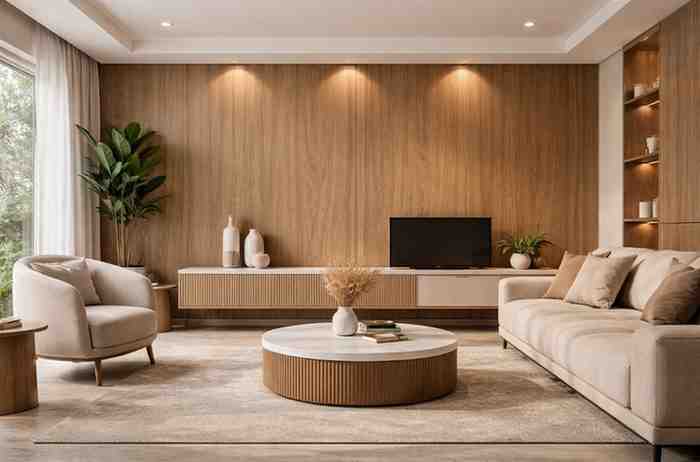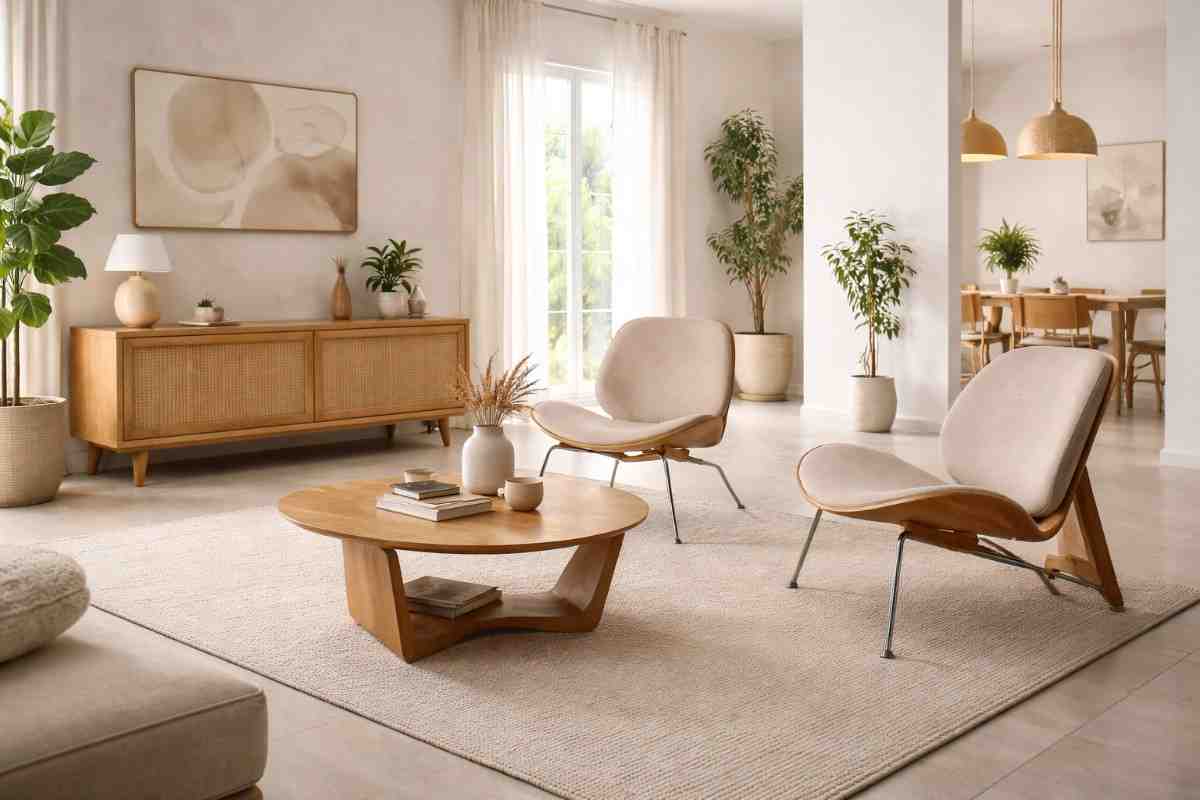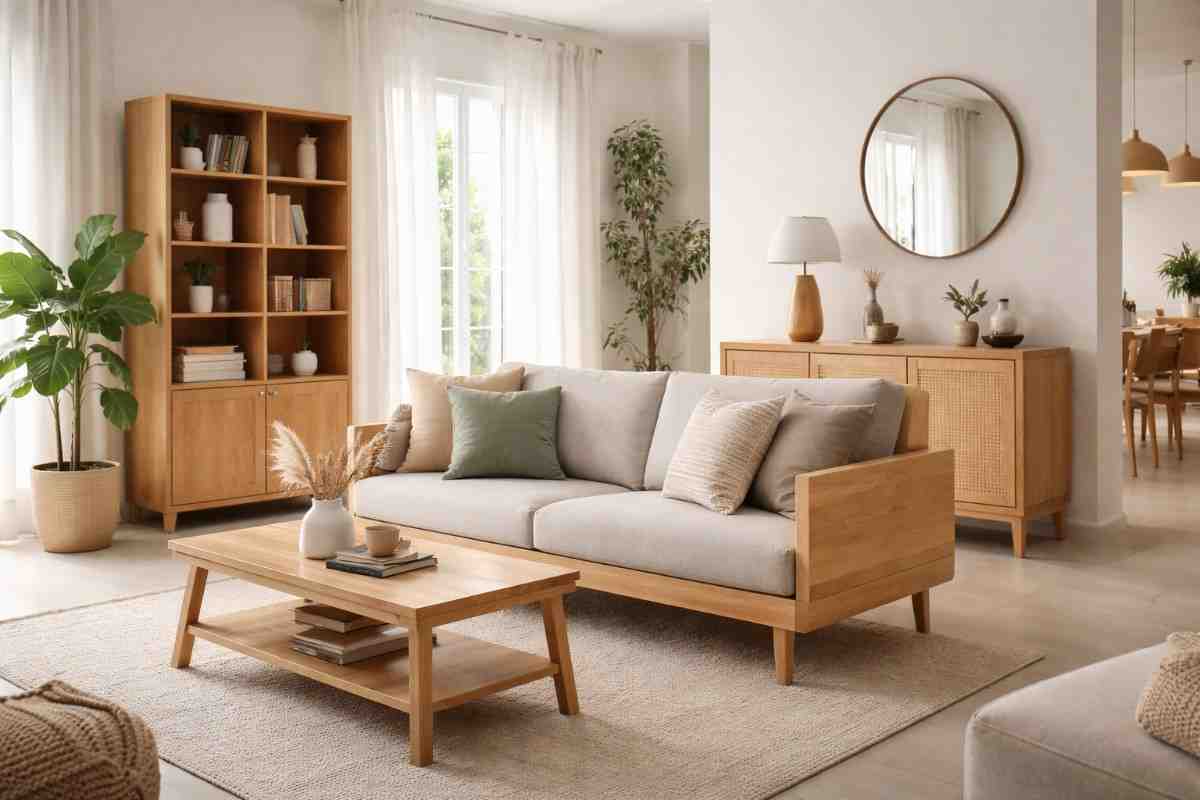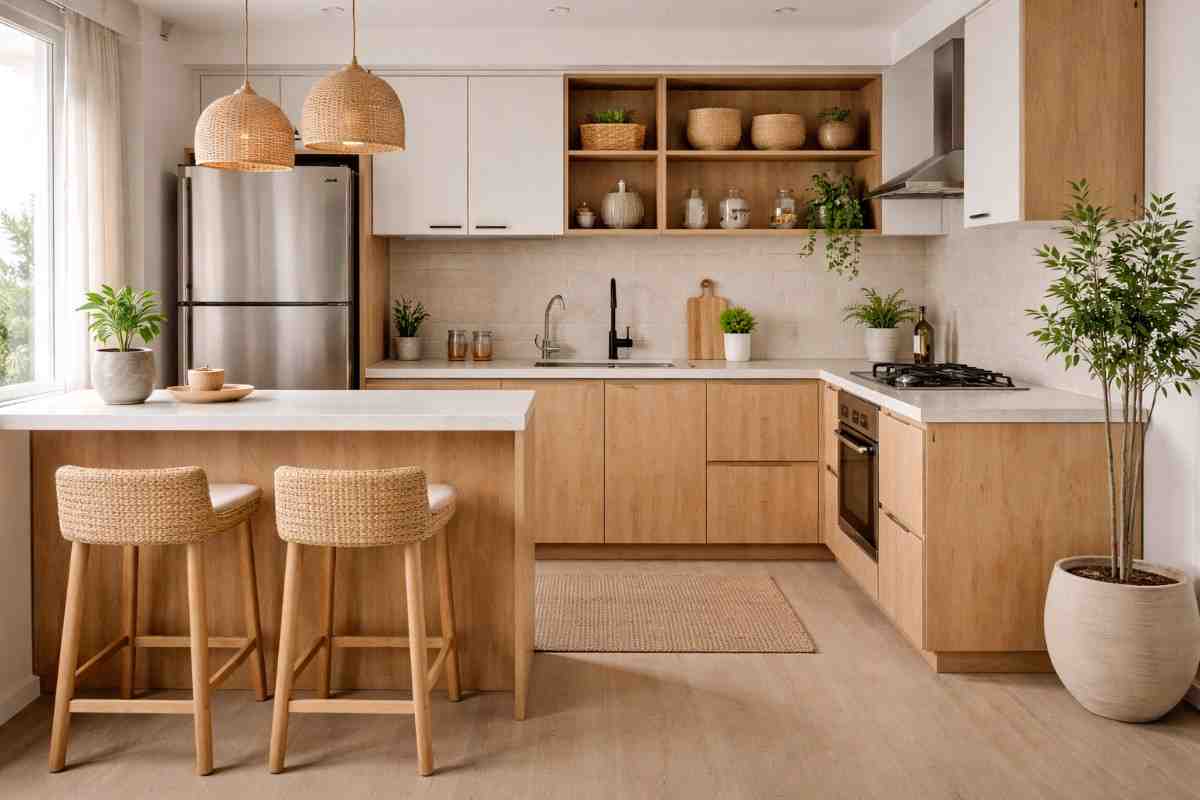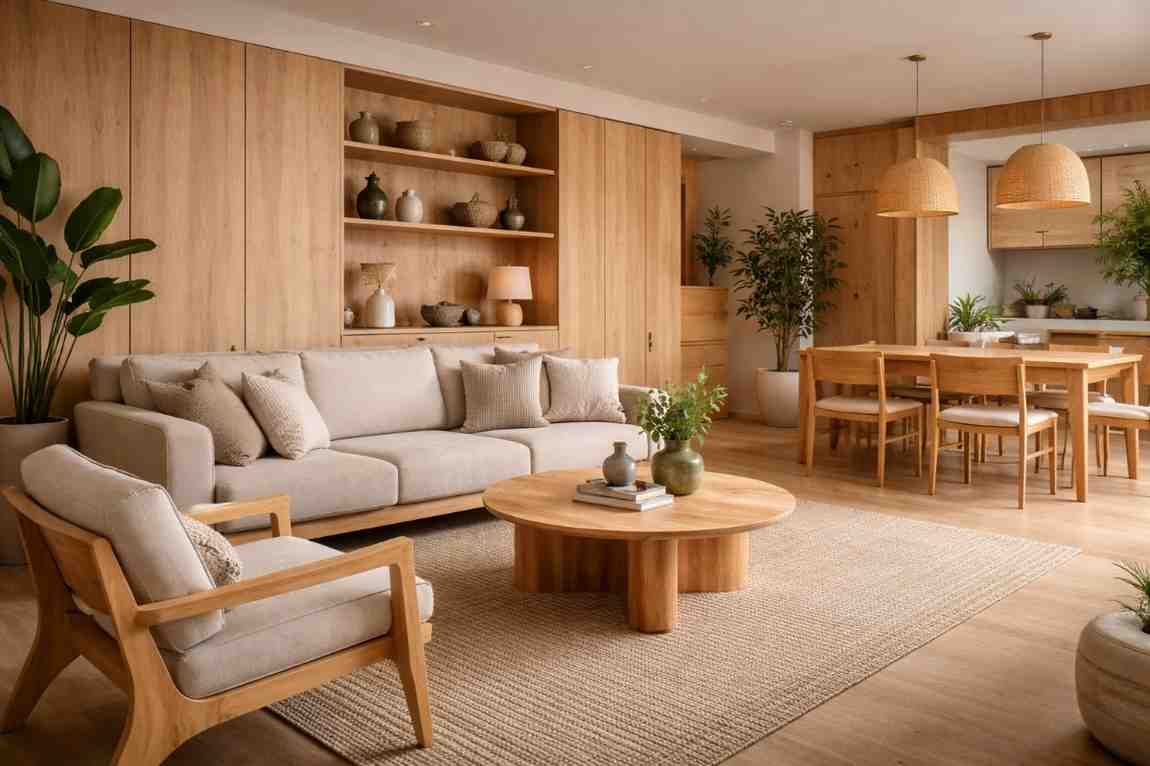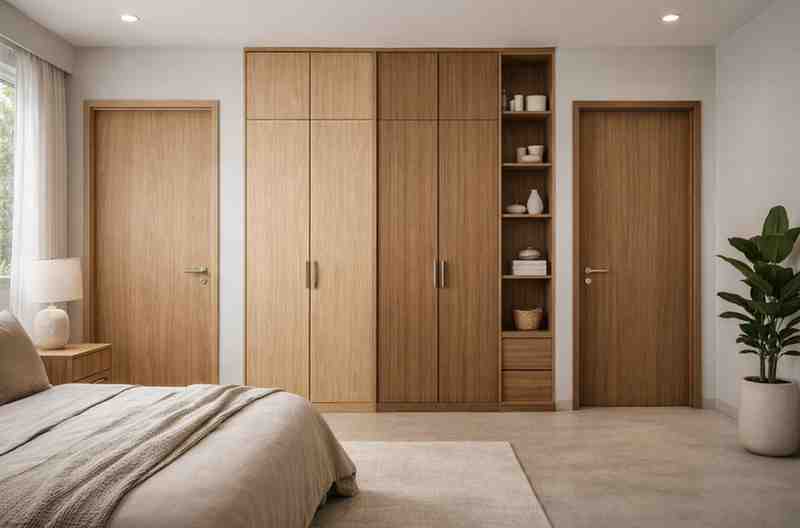
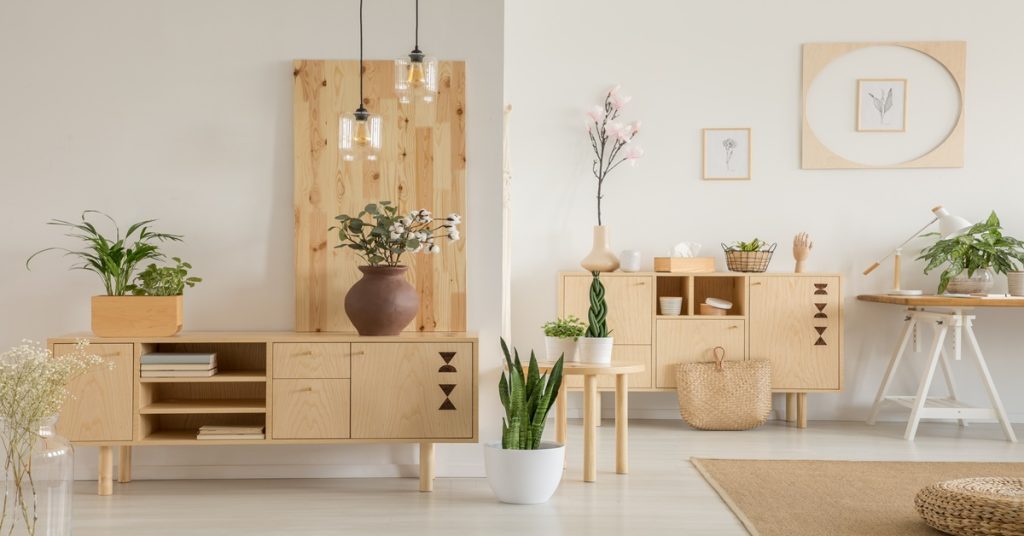
The materials you use to build or remodel a house have a huge impact on how pleasant it is, how long it lasts, and how well it utilises energy. There are many materials to pick from for interiors, but plywood is a sensible and adaptable choice. We’ll discuss the numerous types of plywood available in India, how to choose the proper one, and why plywood is often a better and more practical alternative to solid wood.
Table of Contents
ToggleWhat Makes Plywood a Smart Interior Choice
- Dimensional Stability: Plywood is particularly stable since it is constructed of boards that are glued together at a 90-degree angle to each other. Solid wood can bend, swell, and shrink, especially in places where the temperature and humidity change a lot. This makes it exceedingly hard to do these things.
- Superior Strength and Durability: Plywood is incredibly strong and long-lasting, even though it is constructed of thin bits of wood. The stress is evenly spread out across the full sheet because the layers are spread out. Because of this, it can hold screws without breaking. Because of this, it’s an excellent material for building furniture that will last a long time and be strong.
- Cost-Effectiveness: Plywood is substantially cheaper than high-quality real wood. It takes less raw wood and makes less rubbish to make plywood, which makes the process more efficient. This is a wonderful solution for folks on a budget who want a high-end look but don’t want to spend the ridiculously high price of solid wood.
- Versatility in Design: Plywood is a very flexible material that is easy to cut, shape, and make into intricate patterns. Designers and homeowners can get any look they want with this smooth surface, which is an excellent base for paints, laminates, and veneers.
Explore top-quality plywood options to build durable, stylish, and well-insulated homes.
Types of Plywood Used in Indian Homes
- Moisture-Resistant (MR) Grade Plywood: This type is also known as commercial plywood and is most typically used in dry spaces, including bedrooms, living rooms, and study areas. You shouldn’t use it in the bathroom or kitchen because it’s not waterproof. It is made to fight moisture. This is the most affordable option to buy furniture that can be used for a lot of purposes.
- Boiling Water Proof (BWP) Grade Plywood: If you live in a place that gets damp or steamy, BWP-grade plywood is the best choice. This plywood meets the ISI:710 standard and is held together with a durable, waterproof phenolic resin. Because it doesn’t get damaged by water as easily as other materials, it’s the greatest choice for kitchen cabinets, bathroom sinks and other damp places.
- Fire-Retardant Plywood: Fire-proof chemicals are used to treat plywood so that fires spread more slowly. This type of plywood is perfect for restaurants, places where fire safety is crucial, and electrical panel enclosures. It is a key feature of a home’s passive fire defence.
- Marine Plywood: Marine plywood is the best waterproof plywood, and it meets the ISI:710 standard. It can handle being in water for a long time because it is built of high-quality timber veneers and phenolic resin. Because of this, it’s great for boats, outdoor furniture, and other places where water could get to it.
How to Choose the Right Plywood
- Look for ISI Certification: The government supports ISI certification as a tool to ensure quality. Check for the ISI:710 mark to get a BWP mark. Check for the ISI:303 mark to get an MR score. This certification signifies that the plywood has been put through a lot of tests to make sure it is strong, long-lasting, and water-resistant.
- Inspect the Core Material: The plywood’s strength and stability depend on how good the core material is. Look for plywood made only from hardwood trees like Gurjan or Eucalyptus. It is firmer and has a core that is solid. Don’t buy goods that have a softwood or composite core because they don’t last as long.
- Check for Calibrated Thickness: For a superb finish and shine, the thickness must stay the same. Use a calliper to check the thickness of the plywood in a few different spots. There won’t be much difference in the price of premium, calibrated plywood, which is important for a perfect bond and finish.
- Consider Emission Standards: To keep your home healthy, only buy plywood that meets low-emission requirements (E0 or E1). This means that the plywood is created with glues that don’t have a lot of formaldehyde in them. It means that it doesn’t release as many harmful VOCs into the air in your home. This is a very important step in keeping the inside air clean all the time.
Discover the right plywood for every space in your home, from dry interiors to moisture-prone areas.
Why Plywood is Better Than Solid Wood
- Dimensional Stability: Wood is a natural substance that changes size when the temperature and humidity vary. This can make the wood bend, crack, and break. Plywood is significantly more solid and resistant to these difficulties because it is cross-laminated. This means that your furniture will stay in wonderful form.
- Greater Strength: Plywood is frequently stronger than solid wood because it is made up of layers. The grain of each veneer is at a right angle to the grain of the following one. This makes it stronger and lasts longer. This is because the force is spread out, and the material doesn’t break down the grain.
- Cost-Effective: It’s increasingly harder to find and more expensive to buy good, solid wood. Plywood is cheaper since it is an engineering product. This means that more individuals can afford to buy furniture that lasts longer and is better. This lets you execute major work on a budget without sacrificing quality.
- Versatility and Aesthetics: Plywood is more flexible and looks better when you design with it. You can simply shape it into shapes and curves, and its smooth surface is perfect for many different types of ornamental finishes. This lets you build patterns that are more modern and inventive than you could with solid wood.
Conclusion
In conclusion, plywood is a sturdy, solid, and adaptable building material that is quite useful for modern homes. It is incredibly hard to warp or get wet because it was made that way. It is also quite affordable and comes in many styles, so it may be used for many things in Indian houses. You can be sure that the product will perform properly, keep you secure, and help your home in the future if you buy it from a well-known brand like Wigwam.
Check out WigwamPly for certified, calibrated plywood that combines strength, safety, and sustainability.
FAQ’s
- Is plywood suitable for home insulation?
Yes, plywood offers both thermal and acoustic insulation, helping to maintain a comfortable indoor temperature and reduce noise. - What is the main difference between MR grade and BWP grade plywood?
The MR grade is moisture-resistant for dry areas, while the BWP grade is boiling waterproof, making it suitable for wet areas like kitchens and bathrooms. - Is plywood furniture as strong as solid wood furniture?
Due to its cross-laminated structure, high-quality plywood is often stronger and more dimensionally stable than solid wood. - What is the importance of ISI certification for plywood?
ISI certification is a government-backed guarantee that the plywood meets rigorous quality and performance standards. - Can I use plywood for outdoor furniture?
BWP grade or Marine plywood is suitable for semi-outdoor and outdoor furniture as it can withstand moisture and weather.
